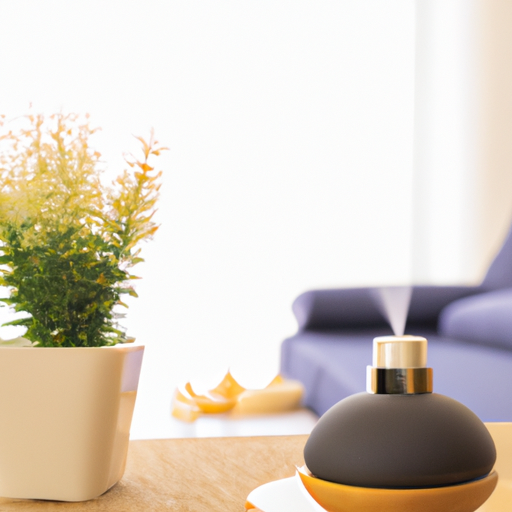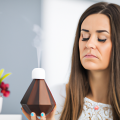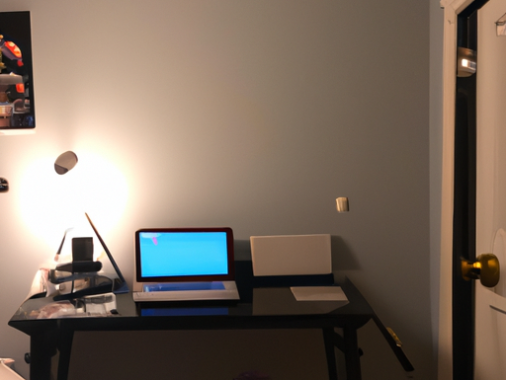-
Table of Contents
- Introduction
- How to Use a Diffuser with Essential Oils and Water
- What Are the Benefits of Diffusing Essential Oils with Water?
- How to Choose the Right Diffuser for Your Essential Oil Needs
- What Are the Different Types of Diffusers and How Do They Work?
- How to Clean and Maintain Your Diffuser for Optimal Performance
- What Are the Safety Precautions to Consider When Using a Diffuser?
- How to Create the Perfect Aromatherapy Blend for Your Diffuser
- Q&A
- Conclusion
Introduction
A diffuser is a great way to enjoy the benefits of essential oils in your home. But do you need to add water to a diffuser when using essential oils? The answer is yes, you do need to add water to a diffuser when using essential oils. Adding water to a diffuser helps to disperse the essential oils into the air, allowing you to enjoy the benefits of the oils. In this article, we will discuss why it is important to add water to a diffuser when using essential oils, as well as how much water you should add.
How to Use a Diffuser with Essential Oils and Water
Using a diffuser with essential oils and water is a great way to enjoy the therapeutic benefits of aromatherapy. Diffusers are designed to disperse essential oils into the air, allowing you to enjoy the aroma and therapeutic benefits of the oils. Here is a step-by-step guide on how to use a diffuser with essential oils and water.
1. Fill the diffuser with water. Most diffusers require you to fill the reservoir with water up to the fill line. Make sure to use distilled or filtered water to prevent mineral buildup in the diffuser.
2. Add essential oils. Once the diffuser is filled with water, add a few drops of your favorite essential oil. Depending on the size of the diffuser, you may need to adjust the amount of essential oil you use.
3. Turn on the diffuser. Once the diffuser is filled with water and essential oils, turn it on. Most diffusers have an adjustable timer, so you can set it to run for a certain amount of time.
4. Enjoy the aroma. As the diffuser runs, the essential oils will be dispersed into the air, allowing you to enjoy the aroma and therapeutic benefits of the oils.
Using a diffuser with essential oils and water is a great way to enjoy the therapeutic benefits of aromatherapy. With a few simple steps, you can enjoy the aroma and therapeutic benefits of essential oils in your home or office.
What Are the Benefits of Diffusing Essential Oils with Water?
Diffusing essential oils with water offers a variety of benefits. Firstly, diffusing essential oils with water helps to disperse the oils more evenly throughout the air, allowing for a more consistent scent. This can be especially beneficial in larger rooms or areas. Secondly, diffusing essential oils with water can help to reduce the intensity of the scent, making it more pleasant and less overwhelming. This can be especially helpful for those who are sensitive to strong scents.
Thirdly, diffusing essential oils with water can help to reduce the risk of skin irritation. When essential oils are diffused with water, the water helps to dilute the oils, making them less concentrated and less likely to cause skin irritation. Finally, diffusing essential oils with water can help to increase the therapeutic benefits of the oils. The water helps to break down the oils, allowing them to be more easily absorbed into the body and providing a greater therapeutic effect.
Overall, diffusing essential oils with water can provide a variety of benefits, including a more consistent scent, reduced intensity, reduced risk of skin irritation, and increased therapeutic benefits.
How to Choose the Right Diffuser for Your Essential Oil Needs
When it comes to using essential oils, having the right diffuser is essential. A diffuser is a device that disperses essential oils into the air, allowing you to enjoy the therapeutic benefits of the oils. With so many different types of diffusers available, it can be difficult to know which one is right for your needs. Here are some tips to help you choose the right diffuser for your essential oil needs.
First, consider the size of the space you want to use the diffuser in. If you plan to use the diffuser in a large room, you will need a larger diffuser with a higher output. On the other hand, if you plan to use the diffuser in a smaller space, a smaller diffuser with a lower output will be sufficient.
Next, consider the type of diffuser you want. There are several types of diffusers available, including ultrasonic, nebulizing, and heat diffusers. Ultrasonic diffusers use water and ultrasonic vibrations to disperse essential oils into the air. Nebulizing diffusers use a high-pressure air stream to disperse essential oils. Heat diffusers use heat to disperse essential oils. Each type of diffuser has its own advantages and disadvantages, so it’s important to consider which type is best for your needs.
Finally, consider the features you want in a diffuser. Some diffusers come with additional features such as timers, adjustable mist settings, and LED lights. These features can be helpful if you want to customize your diffusing experience.
By considering the size of the space, the type of diffuser, and the features you want, you can find the right diffuser for your essential oil needs. With the right diffuser, you can enjoy the therapeutic benefits of essential oils in your home or office.
What Are the Different Types of Diffusers and How Do They Work?
There are several types of diffusers available on the market today, each of which works in a slightly different way. The most common types of diffusers are ultrasonic, nebulizing, and heat diffusers.
Ultrasonic diffusers use ultrasonic vibrations to break down essential oils into tiny particles that are then dispersed into the air. This type of diffuser is relatively quiet and can be used to create a pleasant atmosphere in any room.
Nebulizing diffusers use a small fan to disperse essential oils into the air. This type of diffuser is more powerful than an ultrasonic diffuser and can be used to create a stronger scent in a room.
Heat diffusers use heat to disperse essential oils into the air. This type of diffuser is the most efficient at dispersing essential oils, but it can also be the most dangerous if not used properly.
No matter which type of diffuser you choose, they all work to disperse essential oils into the air, creating a pleasant atmosphere in any room.
How to Clean and Maintain Your Diffuser for Optimal Performance
Diffusers are a great way to enjoy the benefits of essential oils, but they require regular maintenance to ensure optimal performance. Here are some tips for cleaning and maintaining your diffuser:
1. Empty the water tank after each use. This will help prevent the buildup of bacteria and other contaminants.
2. Clean the water tank and other parts of the diffuser with a mild soap and warm water. Be sure to rinse thoroughly and dry completely before reassembling.
3. Use a cotton swab to clean the ultrasonic plate, which is the part of the diffuser that creates the mist.
4. Replace the water tank and other parts of the diffuser regularly. This will help ensure that the diffuser is working properly and efficiently.
5. Check the power cord for any signs of wear or damage. If the cord is frayed or damaged, replace it immediately.
6. Store the diffuser in a cool, dry place when not in use. This will help prevent the buildup of dust and other contaminants.
By following these simple steps, you can ensure that your diffuser is working properly and efficiently. Regular cleaning and maintenance will help extend the life of your diffuser and ensure that you get the most out of your essential oil experience.
What Are the Safety Precautions to Consider When Using a Diffuser?
When using a diffuser, it is important to take certain safety precautions to ensure the safety of yourself and those around you.
First, always read the manufacturer’s instructions before using the diffuser. This will provide important information about the proper use and maintenance of the device.
Second, never leave the diffuser unattended while it is in use. This is especially important if you are using the diffuser in a room with children or pets.
Third, be sure to use only the essential oils recommended by the manufacturer. Some essential oils can be toxic if used in a diffuser, so it is important to use only those that are safe for use in a diffuser.
Fourth, never add water to the diffuser. This can cause the device to malfunction and can be a fire hazard.
Fifth, always unplug the diffuser when it is not in use. This will help to prevent any accidental fires or electric shocks.
Finally, never place the diffuser near any open flames or heat sources. This can cause the essential oils to ignite and cause a fire.
By following these safety precautions, you can ensure that you and those around you are safe when using a diffuser.
How to Create the Perfect Aromatherapy Blend for Your Diffuser
Creating the perfect aromatherapy blend for your diffuser can be a rewarding and therapeutic experience. Aromatherapy is the practice of using essential oils to promote physical and emotional wellbeing. Diffusers are a great way to disperse essential oils into the air, allowing you to enjoy the benefits of aromatherapy in your home or office. Here are some tips for creating the perfect aromatherapy blend for your diffuser.
First, decide what type of blend you want to create. Are you looking for a calming blend to help you relax, or an energizing blend to help you focus? Knowing what type of blend you want to create will help you choose the right essential oils.
Next, select the essential oils you want to use. Different essential oils have different properties, so it’s important to choose oils that will work together to create the desired effect. For a calming blend, consider lavender, chamomile, and ylang-ylang. For an energizing blend, consider peppermint, lemon, and rosemary.
Once you’ve chosen your essential oils, it’s time to mix them. Start by adding a few drops of each oil to your diffuser. Then, adjust the ratio of each oil until you’ve achieved the desired effect. For a calming blend, you may want to use more lavender and chamomile than ylang-ylang. For an energizing blend, you may want to use more peppermint and lemon than rosemary.
Finally, enjoy your aromatherapy blend! Diffusing essential oils can be a great way to relax, focus, or just enjoy the pleasant scent of your favorite oils. With a little experimentation, you can create the perfect blend for your diffuser.
Q&A
1. Do I need to put water in a diffuser with oil?
Yes, you need to add water to a diffuser with oil. This is because the water helps to disperse the essential oil molecules into the air, creating a pleasant aroma.
2. How much water should I put in a diffuser with oil?
The amount of water you should put in a diffuser with oil depends on the size of the diffuser and the type of oil you are using. Generally, you should fill the diffuser with water up to the fill line indicated on the diffuser.
3. Can I use tap water in a diffuser with oil?
Yes, you can use tap water in a diffuser with oil. However, it is best to use filtered or distilled water to ensure that the water does not contain any impurities that could affect the quality of the essential oil.
4. Is it safe to use essential oils in a diffuser with water?
Yes, it is safe to use essential oils in a diffuser with water. However, it is important to make sure that you are using the correct amount of essential oil for the size of the diffuser and the type of oil you are using.
5. Can I use a diffuser with oil without water?
No, you cannot use a diffuser with oil without water. The water helps to disperse the essential oil molecules into the air, creating a pleasant aroma.
6. Can I use a diffuser with oil and water for aromatherapy?
Yes, you can use a diffuser with oil and water for aromatherapy. This is because the water helps to disperse the essential oil molecules into the air, creating a pleasant aroma.
7. What type of oil should I use in a diffuser with water?
The type of oil you should use in a diffuser with water depends on the type of aroma you are trying to create. Generally, it is best to use pure essential oils for the best results.
Conclusion
In conclusion, it is not recommended to put water in a diffuser with oil. This is because the oil and water will not mix, and the oil will float on top of the water, which can cause the diffuser to malfunction. Additionally, the oil can clog the diffuser, which can lead to a decrease in the effectiveness of the diffuser. Therefore, it is best to use only water in a diffuser with oil.




